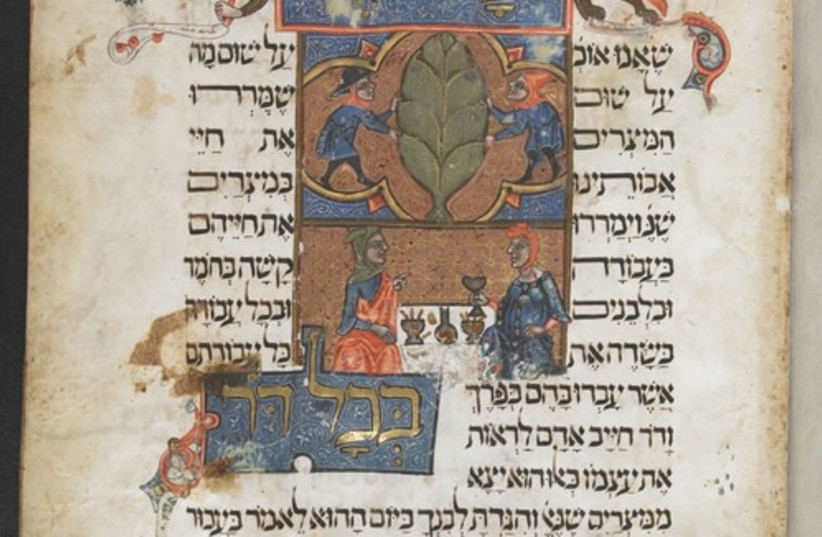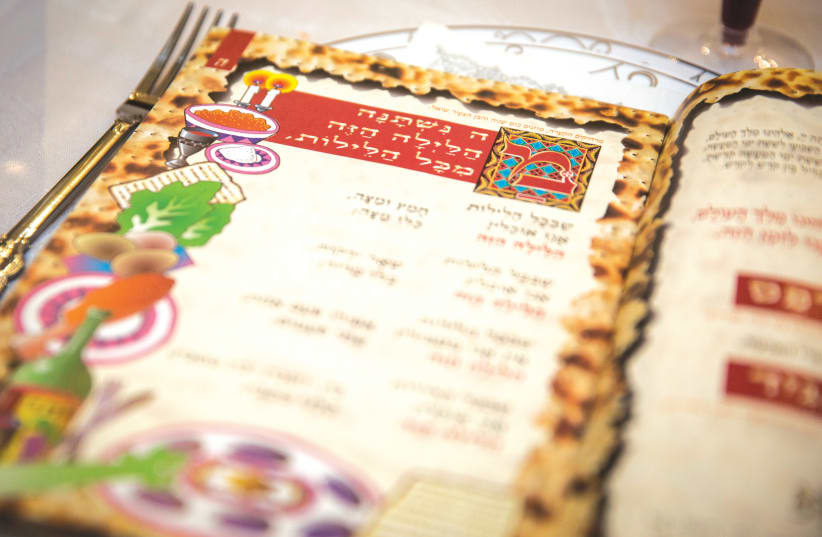When you visit the Kibbutz Holiday Archive in Israel’s Galilee (the Gilboa region), you will find much more than vintage editions of the standard Passover Haggadah. You will feast your eyes on 800 original Haggadot written by immigrant-pioneers who were Israel’s early farmer-philosophers. The Haggadot they published, beginning in the early twentieth century, offer insights into their dialogue with the traditional canon. Rather than abandon the Passover Seder they knew from their homes, they chose to reinvent it. They were inspired by their first Passovers in the heart of the land of Israel. In their Haggadot, they described their dreams, the new landscapes, and the flora and fauna they discovered after their willful decision to leave the climes and vistas of Europe.
Why so many versions of the Haggadah? And what do we learn from the varied perspectives written over many decades?
One clear answer is that it is a natural instinct for each generation to claim the Passover holiday as one’s own. It makes sense that young socialists who pursued their dream to create an independent Jewish nation based on their values would see their Passover as different from the European Jewish society they left behind. A Haggadah published by the Hashomer Hatzair movement in 1945 describes the spring of the land of Israel and social visions of a better future. Their ethos was reflected in their choice of biblical phrases that had never been included in the standard rabbinic text. Other kibbutzim wrote Haggadot that gave a central place to the heroes of the young Jewish nation. In the traditional Haggadah, Moses is only fleetingly referred to. The Haggadah of the United Kibbutz Movement (published in 1965) celebrates both Miriam and Moses. And this year, the members of Kibbutz Eilot (in the Arava) are engaged in celebrating their sixtieth anniversary with the writing of an updated Haggadah to reflect their twenty-first century perspectives.
Beyond its collection of more than 800 original Haggadot, the Kibbutz Holiday Archive is a treasure trove of over a million texts and photographs of holiday celebrations and rituals to mark the Hebrew calendar and community milestones. The Kibbutz Holiday Archive was founded in the 1950s by Aryeh Ben-Gurion, a nephew of the iconic David Ben-Gurion. Aryeh was intrigued by the diverse and creative ways in which his fellow pioneers (in kibbutzim and moshavim throughout Israel) reinvented Jewish traditions and commemorated life passages. He cultivated his collection in a hut next door to his home on Kibbutz Beit Hashita.
Today, some seventy years later, the archive is the jewel in the crown of Machon Shitim, a national educational center on the grounds of Kibbutz Beit Hashita. Aryeh’s original hut has been transformed into a recognized national collection of over 500 m. of precious manuscripts, photographs and illustrations. Machon Shitim now has classrooms, a beit midrash, and a library for workshops and seminars attended by thousands of educators nationwide. Participants in Machon Shitim programs are educational leaders, army officers, youth leaders, and policy makers who take part in our workshops and seminars. Participants hike and tour the biblical Gilboa region and the rural Galilee. The Machon Shitim website is viewed by half a million visitors and our Asif program provides printed materials to families nationwide to enrich home holiday celebrations.

We look forward to expanding the horizons of Machon Shitim with even greater public engagement. Plans are underway to open the Kibbutz Holiday Archive to the public at large. There is a blueprint for a visitors center, and a courtyard for special events and experiential learning. We want as many people as possible to enjoy leafing through our formidable Haggadah collection, and the many other documents which demonstrate the myriad ways our heritage and the Hebrew calendar, which has been reimagined over the years.
In the traditional words of the Haggadah, we are obligated to view ourselves as though each one of us individually left Egypt. The next step forward is just as vital. We would like to encourage individuals, families and entire communities (from Israel and overseas) to bring to life their own role in the shaping of the Hebrew calendar by creating Jewish holiday celebrations that are meaningful and relevant to us, our children and our children’s children.
The writer is the director of Machon Shitim since 2016. He lives with his family on Kibbutz Naaran, in the Jordan Valley. He is spearheading the initiative to inaugurate Machon Shitim’s Home for the Holidays, a new public campus dedicated to exploring, preserving and reimagining Jewish and Israeli national holidays.
